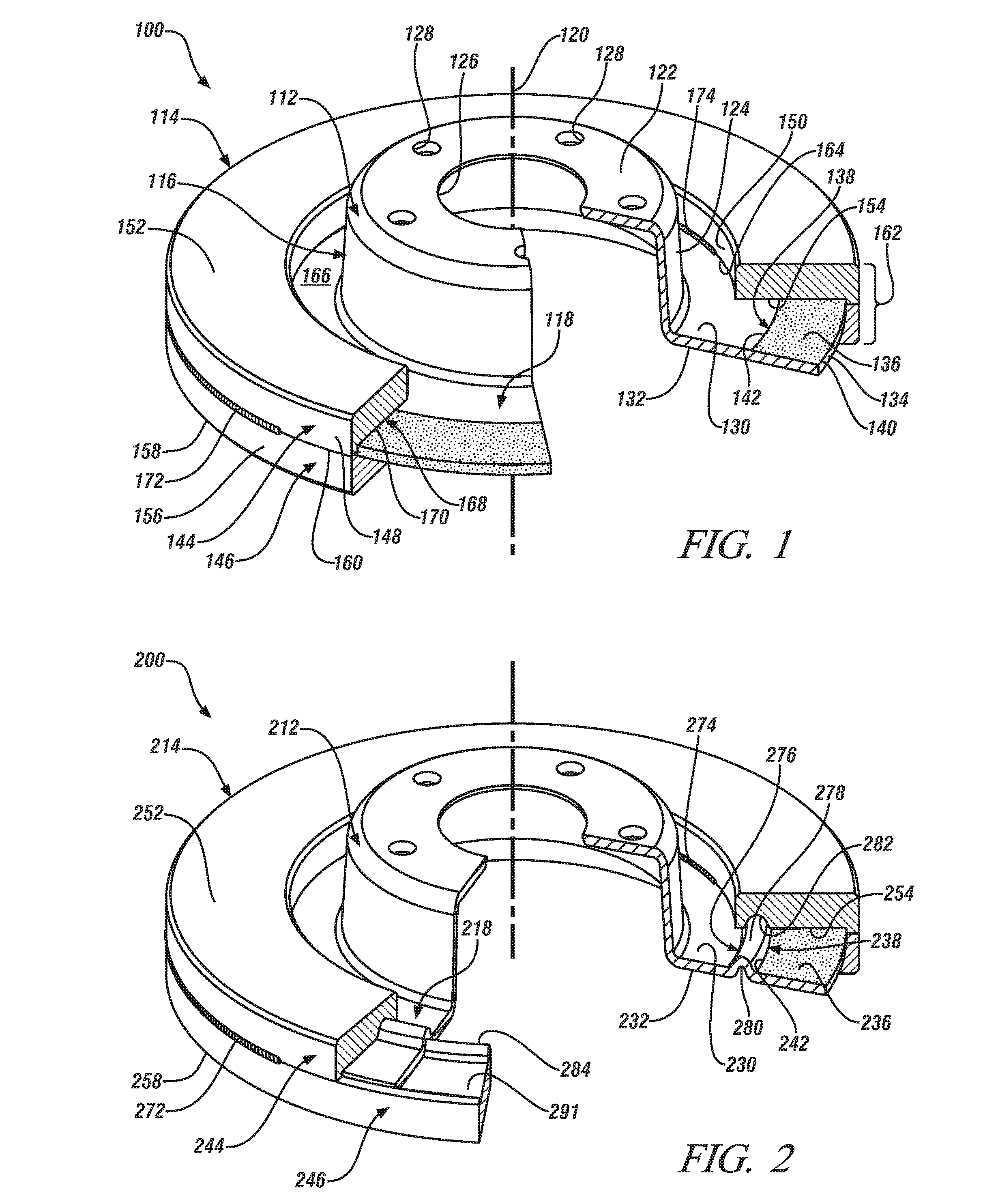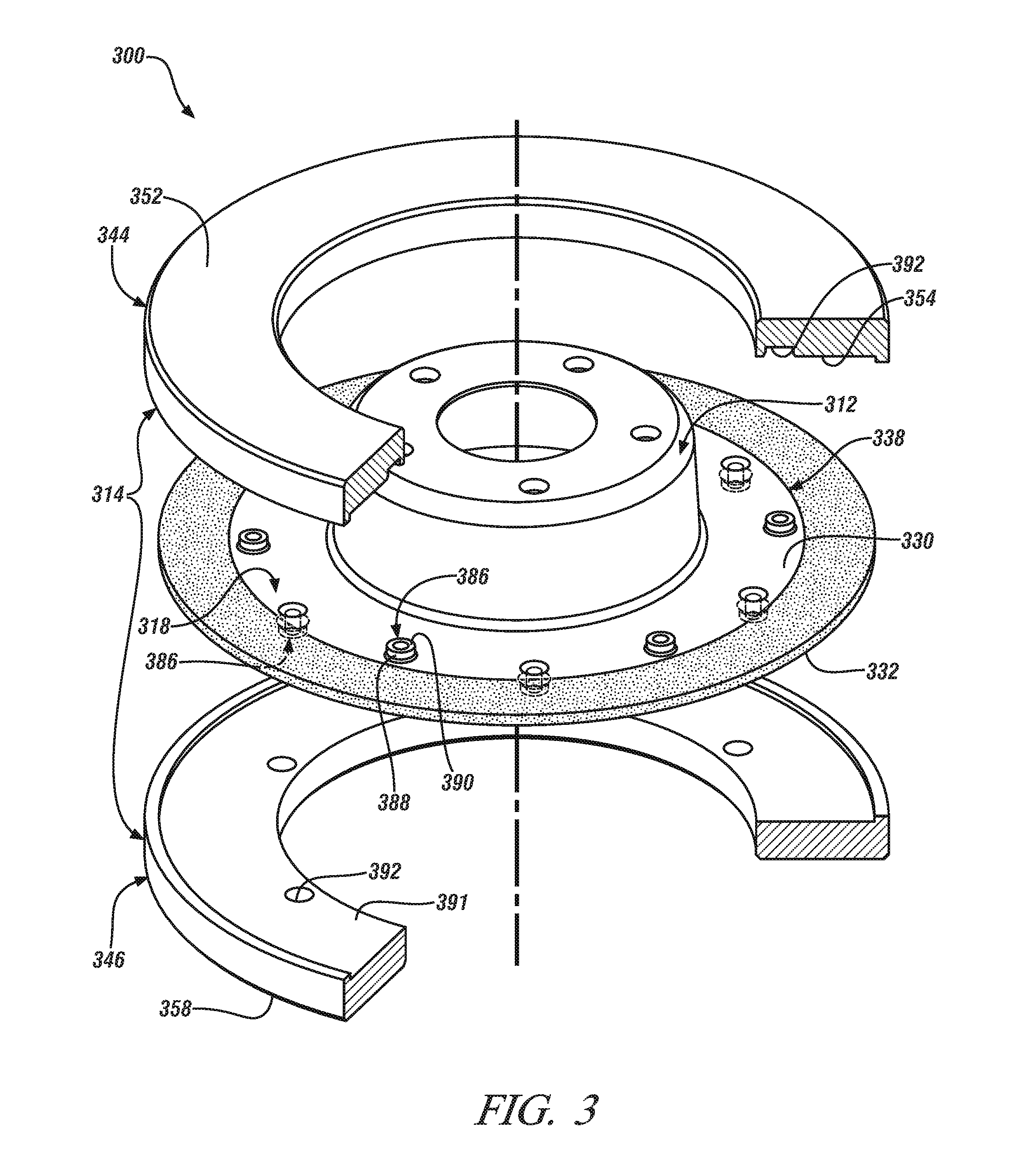Light-weight and sound-damped brake rotor and method of manufacturing the same
a technology of sound-damping brake rotor and manufacturing method, which is applied in the direction of manufacturing tools, brake discs, mechanical equipment, etc., can solve the problems of changing functionality or capability, increasing the manufacturing complexity reducing the service life of the brake rotor, so as to maintenance, and reduce the cost of manufacturing
- Summary
- Abstract
- Description
- Claims
- Application Information
AI Technical Summary
Benefits of technology
Problems solved by technology
Method used
Image
Examples
Embodiment Construction
[0025]Several embodiments of a light weight, sound-damped, composite brake rotor for a vehicle braking system are shown in FIGS. 1-13. The brake rotor includes a rotor cheek, which may be solid or vented, supported on a rotor hat. The rotor cheek is formed from two or more separate and distinct cast iron pieces and, when assembled, provides a pair of oppositely-facing annular braking surfaces against which selectively applied brake pads can be pressed during braking. Located within the rotor cheek between the two oppositely-facing braking surfaces is a vibration damping element. The vibration damping element facilitates a physically distinct, non-bonded, surface-to-surface interface where relative frictional contacting movement can occur when the brake pads are applied against the braking surfaces. Such frictional interactions convert mechanical vibratory energy into dissipating thermal energy and ultimately weaken the proliferation of vibrations and their ability to sustain a disru...
PUM
| Property | Measurement | Unit |
|---|---|---|
| frequency | aaaaa | aaaaa |
| frequency | aaaaa | aaaaa |
| thickness | aaaaa | aaaaa |
Abstract
Description
Claims
Application Information
 Login to View More
Login to View More - R&D
- Intellectual Property
- Life Sciences
- Materials
- Tech Scout
- Unparalleled Data Quality
- Higher Quality Content
- 60% Fewer Hallucinations
Browse by: Latest US Patents, China's latest patents, Technical Efficacy Thesaurus, Application Domain, Technology Topic, Popular Technical Reports.
© 2025 PatSnap. All rights reserved.Legal|Privacy policy|Modern Slavery Act Transparency Statement|Sitemap|About US| Contact US: help@patsnap.com



